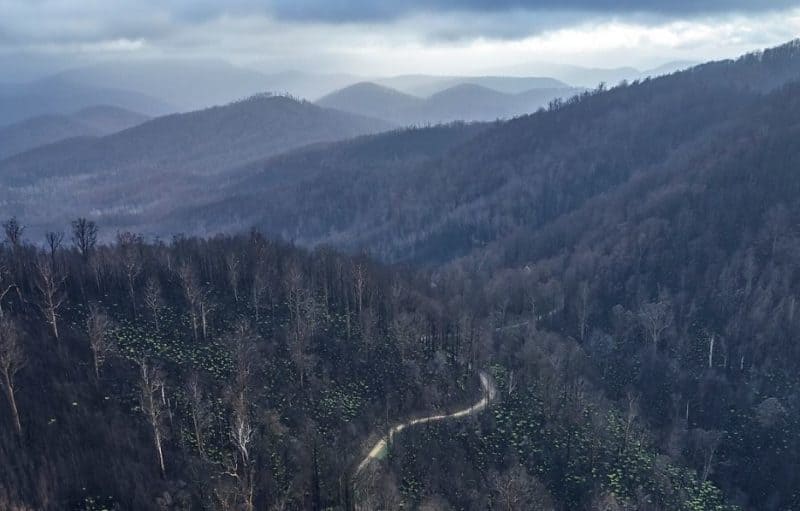PARK WATCH March 2021 |
Victoria’s finest wild mountain should not fall prey to development. Here’s why, from Phil Ingamells.
When Bogong National Park was proclaimed in 1981, the park boundary was carefully drawn to exclude the Falls Creek and Hotham alpine resorts. This would contain new buildings and infrastructure within the resort areas, and leave the new national park free of pressure from commercial developments.
Less than a decade later, Bogong National Park was absorbed into Victoria’s new Alpine National Park, but the resorts and their propensity for ever-expanding visitor infrastructure remained excluded. Since 1981 there has been no significant built accommodation allowed in the area of our Alpine National Park.
But Victoria’s tourism moguls, keen to emulate a few spectacular accommodated walks in New Zealand and elsewhere, proposed four “icon” walks for our state. One is a walk already popular with fit hikers: the Falls Creek to Mount Hotham track.
That tourism-generated dream has morphed into a 56-kilometre, five-day hike, much of it on newly created tracks with overnight lodges, bedroom cabins and camping options at Cope Hut, Tawonga Huts, Diamantina River and Diamantina Spur, all to be serviced by tourism operators.
This ‘Falls to Hotham Alpine Crossing proposal’ should not go ahead, at least not in its present form:
- Of the 229 written responses to the draft “Master Plan”, nearly 90 per cent were strongly opposed, largely because of the hut and lodge construction. This response has been ignored, indeed publicly misrepresented, by Parks Victoria.
- Alpine ecologists are concerned about the extensive new track construction: any new tracks in the park will increase the spread of problem weeds.
- The lodges and huts would be located at long-standing popular bushwalker camping areas.
- There is already ample luxury accommodation (under-occupied in summer!) in the Falls Creek and Hotham resorts. The so-called “comfort in nature” tourist is already well catered for in the area.
- The proposal has now been partially funded, with $15 million allocated in the last State Budget, and planning is proceeding fast. But there has been no proper environmental impact study, and no business case has been prepared despite the effusive claims of economic benefits. Both of these studies should be standard procedure early in the process for any development proposal, let alone one inside one of Victoria’s most important national parks.
The most contentious part of the proposal is the route up Diamantina Spur with a lodge and huts near the summit of Mount Feathertop.
- The Diamantina track is very steep and long, and frankly dangerous even for fit and experienced bushwalkers. The weather, even in mid-summer, can bring snow storms and white-outs. It is not at all suitable for inexperienced walkers attracted by an advertised high-country luxury walk.
- The accommodation would have to be serviced daily by helicopters from Hotham. Such a high carbonemitting service is contrary to government climate mitigation policy, and sends the wrong message in a national park already suffering under climate change. It would also considerably disturb the natural ambience of Feathertop and the High Plains, the very thing that brings visitors to the park.
Mount Feathertop, at 1922 metres, is one of Victoria’s highest mountains and our grandest free-standing peak. It is a truly magnificent feature of Victoria’s alpine country and deserves rigorous protection. It should be respected, not exploited.
Importantly, the Victorian Government has recently confirmed that: “It is still government policy that tourism development will be encouraged to be sited on private or other public land outside national parks”.
This sensible policy, increasingly adopted by park agencies world-wide, should be governing tourism planning in the Alpine National Park. It beggars belief that the government is actually funding the developments for the Falls to Hotham Alpine Crossing.
A far better option would be to promote an extensive array of alpine day walks in the park, starting from the already available accommodation in the two adjacent alpine resorts. It would be much cheaper and easier to set up and far more sound environmentally, socially and economically.
It’s not too late to bury this overly enthusiastic but ill-conceived proposal. We could then concentrate on the real problems facing the park, rather than creating new ones
Did you like reading this article? Want to be kept up to date about this and other nature issues in Victoria? Subscribe to our email updates.
You can also receive our print magazine Park Watch four times a year by becoming a member. Find out more here.
